3rd International Conference on
Materials Science & Engineering (CPD Accredited)
September 26-27, 2024
Corendon Village Hotel Amsterdam, Amsterdam, Netherlands


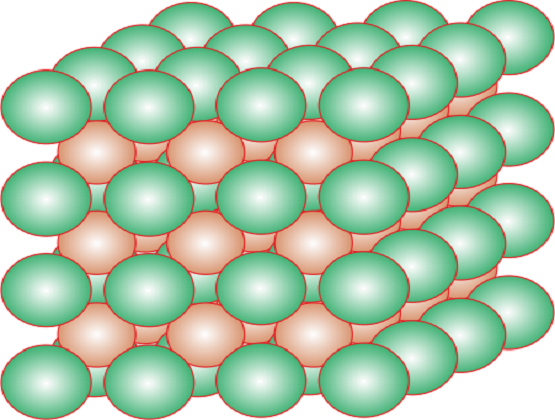
Material Sciences & Engineeringis an integrative field that aims on elements of applied physics and chemistry, and also chemical, mechanical, civil and electrical engineering. It is a combination of engineering, physics and chemistry principles to crack real-world problems related to nanotechnology, biotechnology, information technology, energy, manufacturing and other major engineering disciplines. It contains the properties of matter and related to many areas of science and engineering. It contains the manuscript applicable to Material Science Research, Composite materials, Nano engineering, Nanoparticles, Nano science, Nanotechnology, Ceramics Engineering, etc.
Related Tags:
Material science 2023 | Materials science and engineering Conferences 2023| Material science conferences Paris,France| Material Science Congress 2023| International Conference on Materials Science and Engineering 2023| Materials Science events 2023| Future Materials 2023| Polymer Technology and Plastics Conference 2023|Graphene Technology 2023| Structural Materials 2023|
Associations and Societies:
American Chemical Society (ACS) | ASM International the Materials information on Societies| The Minerals, Metals, & Materials Society (TMS) | European Materials Research of Society | ASM International| Indian Carbon Society | European Materials Research Society | Society for the Advancement of Material and Process Engineering (SAMPE) | American Society for Testing and Materials (ASTM)| Society for the Advancement of Material and Process Engineering | Materials Science and Engineering Association |

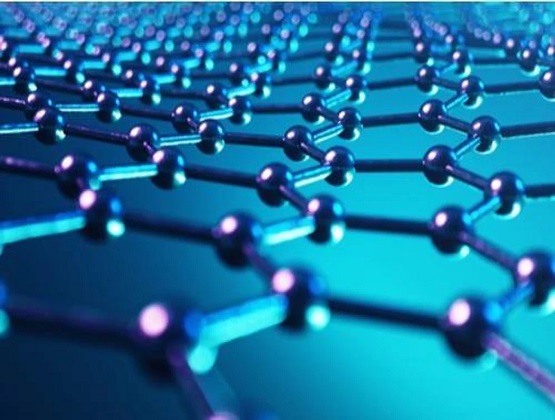
Nanotechnology is related to those areas of science and engineering where cautions that take place at certain limits in the nanometer scale are applied in the design, characterization, production and accoutrements applications, structures, devices and systems. It depends on the ability to design, manipulate, and manufacture materials at the nanoscale. The formed materials are called nanomaterials. Nanomaterial is a term defined as materials holding, at minimum, one external dimension measuring 1-100nm. Some of them are:
Nanomaterials 2023 |Nano engineering Paris, France 2023 | Nano materials Conferences 2023 | Nanomaterials and Nano technology Conferences 2023 | Materials Science and Engineering Conferences 2023| Graphene Technology 2023| Nature and Properties of Materials Summit 2023| Materials Chemistry 2023| Structural Materials 2023|
Associations and Societies:
ASTM International | National Society for Professional Engineers (NSPE) | International Association of Nanotechnology (IANT) | Microscopy Society of America (MSA)| Society for the Advancement of Material and Process Engineering | Materials Science and Engineering Association | Materials Research Society (MRS)| American Society for Engineering Education (ASEE) | National Society for Professional Engineers (NSPE) | Australasian Bio plastics Association |


The term 3D printing is consistently used to mention to all types of additive manufacturing. 3D Printing or Additive manufacturing allows you to produce geometrically complex objects, shapes and textures. 3D printing is an engineering process. It often uses less material than regular manufacturing methods and permits the production of items which are impossible to produce economically with traditional manufacturing. It uses a huge variety of materials, especially plastics and metals. As per the requirement, it is used to create a three-dimensional product layer-by-layer from a digital 3D model. The 3D printing technique is fast-developing manufacturing technology.
Related Tags:
3D Printing Materials 2023 | Additive Manufacturing 2023 | 3D Printing & Additive Manufacturing Conferences 2023 | International Conference on 3D Printing and Additive Manufacturing 2023 | Materials Science Conference 2023|Graphene Technology 2023| Metallurgy Conferences 2023| Semiconductors 2023| Advanced Energy Materials Conferences 2023| Metamaterials Congress 2023|
Associations and Societies:
The National Additive Manufacturing Association | The 3D Printing Association | 3D PRINTING EDUCATION & RESEARCH ASSOCIATION | Materials Science and Engineering Association | Materials Research Society (MRS)| Indian Carbon Society | European Materials Research Society | Society for the Advancement of Material and Process Engineering (SAMPE) | American Society for Testing and Materials (ASTM)| NACE International, The Corrosion Society| ASM International the Materials information on Societies|

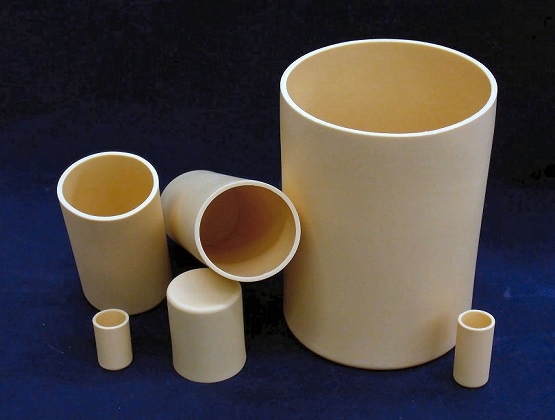
Composite materials have amazing physical or substance properties. The composite materials square measure frequently structured visible of lattice constituent. From surface engineering, a coating can be a layer of fabric that deposits on a substrate to strengthen properties of the surface for corrosion and wear protection. Adhesion, wettability, corrosion resistance, or wear resistance like functional coatings may be applied to change the surface properties of the substrate. Ceramic material is neither metallic nor organic. It may be in crystalline, glassy, or both crystalline and glassy structures. It is any of the various hard, brittle, heat-resistant and corrosion-resistant materials made by shaping then firing an inorganic, non-metallic material, like clay, at a heat.
• Advanced composite materials
• Mechanics of composite materials
• Thermoplastics
• Nanolithography
• Ceramic Matrix composite
• Metal matrix composites
• Plastic recycling
Related Tags:
Ceramics 2023 | Ceramic Materials Conferences Paris, FRANCE 2023 | International Conference on Composites,Coating and Ceramic Materials 2023| Materials Chemistry Conferences 2023 | Advanced Ceramic Materials 2023 | International Conference on Ceramics| Composite Materials 2023 | International Conference on Composite Materials | The European Conference of Composite Materials of 2023 | International Conference on Polymer Science and Composite Materials | International Conference on Advanced Composite Materials |
Associations and Societies:
ACMA - American Composites Manufacturers Association | Association of Composites Manufacturers | Society for the Advancement of Material and Process Engineering (SAMPE)| The American Ceramic Society | American Chemical Society |Association of American Ceramic Component Manufacturers | United States Advanced Ceramics Association | Microscopy Society of America (MSA)| Functional Materials Congress | International Association of Advanced Materials – IAAM |

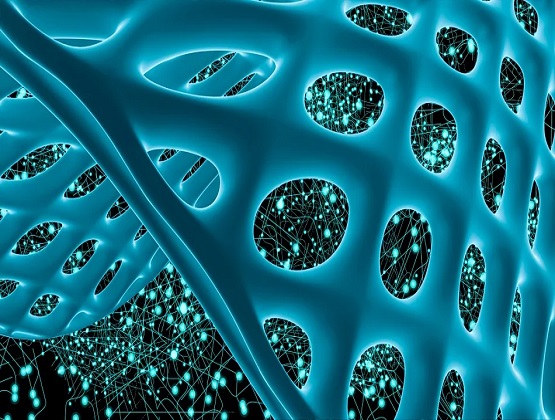
Biomaterials may be natural or synthetic materials. These materials are used in medical applications to support, improve, or replace damaged tissue or a biological function. The first historical use of biomaterials dates to ancient times, when ancient Egyptians used sutures made from animal sinew.
Related Tags:
Biomaterials 2023 | Material Chemistry 2023 | Biomaterials and Medical Devices Conferences 2023 | International Conference on Biomaterials and Nano materials | International Conference on Biomaterials and Bio devices | Biomedical engineering conference 2023 | Global Conference on Bio materials 2023|Graphene Technology Congress 2023| Nature and Properties of Materials 2023| Structural Materials 2023|
Associations and Societies:
American Chemical Society | American Society of Agricultural and Biological Engineers | American Society for Biochemistry and Molecular Biology | Biomedical Engineering Society | Biophysical Society |The National Additive Manufacturing Association | Materials Science and Engineering Association | Materials Research Society (MRS)| Indian Carbon Society | European Materials Research Society |

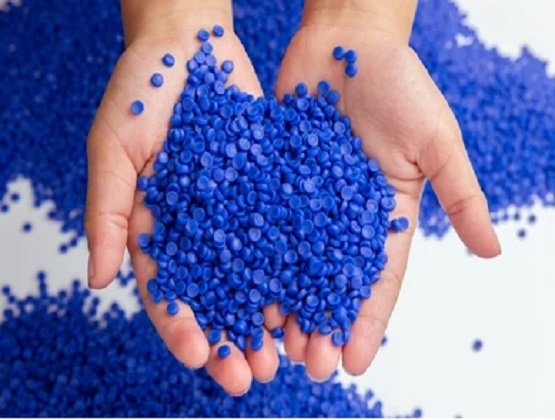
Polymer technology study plastic materials, textile fibres ,fabrics and composite materials. The research has an applied orientation, with the objective to find out industrial applications. Several research projects have been done in close collaboration with companies. Some application examples are textiles and composites for automotive, flame retardant fibres and fabrics for protective clothing, plastic materials and composites for buildings and constructions, new biomedical textile fibres and new packaging materials.
Related Tags:
Polymers 2023 | Biopolymers 2023 | Biopolymers and Polymer Chemistry Congress 2023 | Biopolymers Conference 2023 | Polymer Science Conference | Polymer Science Congress 2023| International Conference on Biopolymers and Bio plastics| Polymer Technology and Plastics Conference 2023| Smart Hybrid Materials Conferences 2023| Metals and Mining Materials 2023| Structural Materials Conference 2023|
Associations and Societies:
Australasian Bio plastics Association | BBIA – Bio-Based and Biodegradable Industries Associations | Bio – Biotechnology Industry Organization (USA) | HUNGARIAN BIOPOLYMERS ASSCOAITION | Japan Bio plastics Association | Thai Bio plastics Industry Associations | Society for the Advancement of Material and Process Engineering | Materials Science and Engineering Association | Materials Research Society (MRS)| Association of Composites Manufacturers |


With increasing energy demand, there exists a critical relationship between Energy, environment, and sustainability. It causes novel discoveries and advancement within the field of Energy Materials in the exploration of other resources. The major requirement is to revise feedstock into suitable energy sources. It acts as a catalyst for better solar cells and energy storage materials. Energy Materials makes ground-breaking developments within the science of materials innovation and production. Now, Novel materials are technologically advanced for energy storage and its generation. Due to the conversion of conservative fuel to renewable and sustainable energy sources as a result of geophysical and social stress, leads to the occurrence of Advanced Energy Materials occurred to support developing technologies. The energy related applications of emerging materials are nanostructured materials, photovoltaic, fuel cells, light sources etc.
Related Tags:
Energy Materials 2023 | Advanced Energy Materials Conference Paris, France | International Conference on Advanced Material Conferences 2023 | Congress on Advanced Materials | World Congress on Materials Science and Engineering | World Conference on Materials Science and Nanotechnology| Graphene Technology Congress 2023| Nature and Properties of Materials 2023| Materials Chemistry Congress 2023| Metals and Mining Materials 2023|
Associations and Societies:
American Ceramic Society, The (Acers) | Society for the Advancement of Material and Process Engineering (SAMPE) | American Society for Testing and Materials (ASTM) | NACE International, The Corrosion Society | American Chemical Society (ACS) | ASM International the Materials information on Societies| The Minerals, Metals, & Materials Society (TMS) | European Materials Research of Society |American Society for Engineering Education (ASEE) | National Society for Professional Engineers (NSPE) | International Association of Nanotechnology (IANT)|


A Polymer is a long chain molecule which is made up of many repeating units called monomers. For example, they exist in plastics such as bottles, toys, vinyl siding, and packaging, and are also present in cosmetics, shampoos and other hair care products, contact lenses. These are also available naturally such as crab shells, amber, food like proteins, starches, gelatin, gum, gluten, fabric, balls, sneakers, and also in our DNA. It is a composition of very large molecules called macromolecules. These naturally occurred macromolecules are called Biopolymers. These are made up of repeating subunits. This omnipresent family of polymers possesses a huge variety of structural compositions and material properties. Biopolymers like nucleic acid materials such as DNA and RNA are composed of repeated nucleotide subunits.
Related Tags:
Polymers 2023 | Bio polymers 2023 | World Biopolymers and Polymer Chemistry Congress 2023 | Bio plastics Conference 2023 | Polymer Technology and Plastics Conference 2023| Graphene Technology 2023| Graphene Technology Congress 2023| Nature and Properties of Materials 2023| Polymer Science Conference | Polymer Science Congress 2023| International Conference on Biopolymers and Bio plastics|
Associations and Societies:
Australasian Bio Bio – Biotechnology Industry Organization (USA) | plastics Association | BBIA – Bio-Based and Biodegradable Industries Associations | HUNGARIAN BIOPOLYMERS ASSCOAITION | Japan Bio plastics Association | Thai Bio plastics Industry Associations |SOCIETY FOR MATERIALS CHEMISTRY| Indian Chemical Society| American Chemical Society (ACS) | ASM International the Materials information on Societies| The Minerals, Metals, & Materials Society (TMS) | Association of Composites Manufacturers |Society for the Advancement of Material and Process Engineering (SAMPE)|

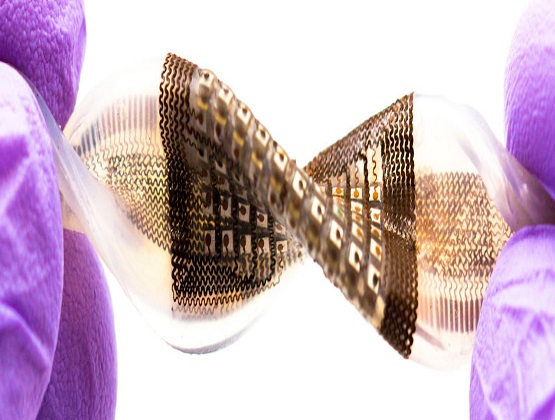
Nanoengineering focuses on the study, development and refinement of materials at a very small scale. It can be observed as the practical application of nanoscience. It is similar to mechanical engineering which relates to the principles of physics. It is a technique which is useful in a wide range of industries, including electronics, energy, medicine, and biotechnology. Nanoengineering involves:
Nano materials 2023 | Nano engineering Paris, France 2023 | Nano materials Conferences 2023 | Nanomaterials and Nano technology Conferences 2023 | International Summit on Nano technology 2023 | Congress on Carbon and Advanced Energy Materials| Materials Science and Engineering Conferences 2023| Graphene Technology 2023| Nature and Properties of Materials Summit 2023| Materials Chemistry 2023| Structural Materials 2023|
Associations and Societies:
National Society for Professional Engineers (NSPE) | International Association of Nanotechnology (IANT) | Microscopy Society of America (MSA)| Society for the Advancement of Material and Process Engineering | Materials Science and Engineering Association| Materials Research Society (MRS)| American Society for Engineering Education (ASEE) | ASTM International | National Society for Professional Engineers (NSPE) | Australasian Bio plastics Association | BBIA – Bio-Based and Biodegradable Industries Associations |

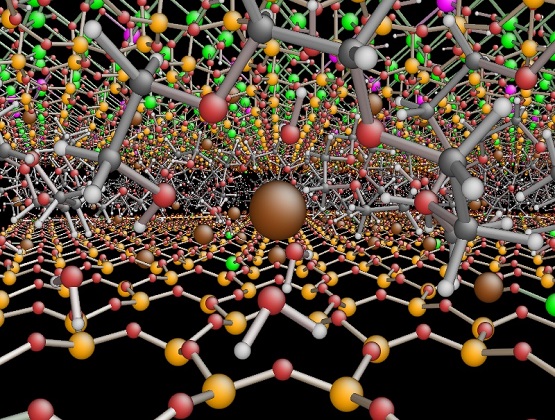
Computational materials include computational methods to solve consistent problems with the materials. Specific mathematical models are available to test the issues on various length and time scales that help to explain the nature of material structures and how these structures efficiently control material properties. At the electronic point, Density Functional Theory is a widespread computational technique while atomic simulation techniques. Phase-field Process is used generally on micron and mesoscale systems for material issues. Molecular Dynamics and Monte Carlo are referred as preferred tools.
Some of the methods are:
• Mould flow analysis
• Modelling behaviour of materials
• Macroscopic Computational Materials Science
• Nano materials synthesis
• Electronic packaging technology, green manufacturing
• Advanced manufacturing technology
• Computational materials science and chemistry
• Artificial intelligence methods
• Numerical techniques
• Expert systems, genetic algorithms, neural networks
• Process system design, engineering or materials
Related Tags:
International Conference on Computational Materials Science 2023| International Congress on Computational Material Science| Advanced Hard Magnetic Materials Conference| Artificial Intelligence and Materials Science Conference |Composite, Coating and Ceramic Materials Conferences 2023| Computational Materials Science Paris,France 2023| Metamaterials 2023| Polymers and Biopolymers Conferences 2023| Metallurgy 2023| Carbon Nanotubes 2023| Graphene Technology 2023|
Associations and Societies:
Society for the Advancement of Material and Process Engineering | Materials Science and Engineering Association | Materials Research Society (MRS)|American Chemical Society (ACS) | ASM International the Materials information on Societies| The Minerals, Metals, & Materials Society (TMS) | European Materials Research of Society | ASM International| Indian Carbon Society |

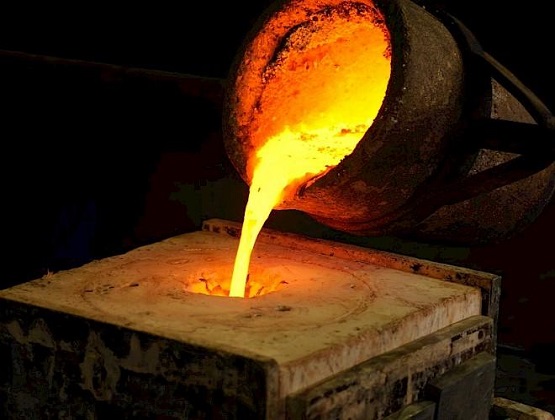
Metallurgy is one of the part of materials science and engineering. It is a study of the physical and chemical behavior of metals. This involves metallic elements, their compounds and their alloys. It is a process of extracting metals in to pure form. The metal compounds are mixed with some constituents like soil, limestone, sand, and rocks are known as minerals. At low cost, the metals are extracted from minerals with minimum effort. These minerals are also known as ores. A substance is added to eliminate the impurities is called as flux. It deals with the process of purification of metals and formation of alloys.
Main branches are:
Types of metallurgy processes:
Related Tags:
Metals 2023 | Mining Materials 2023 Paris, France | International Conference for Metals and Mining Materials 2023 | International Conference on Minerals, Metallurgy and Metals | Global Materials Conference| Carbon Nanotubes Conferences 2023| Semiconductors Conference 2023| Biomaterials and Medical Devices Conferences 2023| Advanced Energy Materials 2023|
Associations and Societies:
Abrasive Manufacturers Association of India | Alloy Steel Producers Association of India (ASPA)| Alloys Manufacturers Association | Aluminum Association of India (AAI)| Aluminum Caster's Association of India (ALUCAST) | The Minerals, Metals & Materials Society| Association for Iron & Steel Technology | The Materials Research Society | Society for Mining, Metallurgy, and Exploration | Minerals Metals and Materials Society (TMS)|

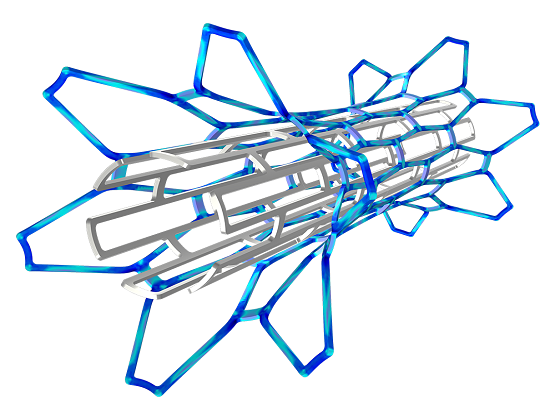
Structural materials are the materials which can be a composite between the materials like metallic, ceramic, polymeric. Most metal alloys are highly crystalline. This crystalline nature plays an important role to deform plastically and opposing failure under repeated mechanical loading. For example, alloys which are used in aircraft that can reimburse for deformation in high-speed flight, or bridges designed to bend in the wind. These materials contains materials whose main purpose is to transmit or support a force.
Applications:
Related Tags:
Associations and Societies:
Indian National Construction & Materials Associations | ACMA - American Composites Manufacturers Association | Association of Composites Manufacturers | The American Ceramic Society | American Chemical Society | Association of American Ceramic Component Manufacturers | United States Advanced Ceramics Association | Indian Carbon Society | European Materials Research Society | Society for the Advancement of Material and Process Engineering (SAMPE) |

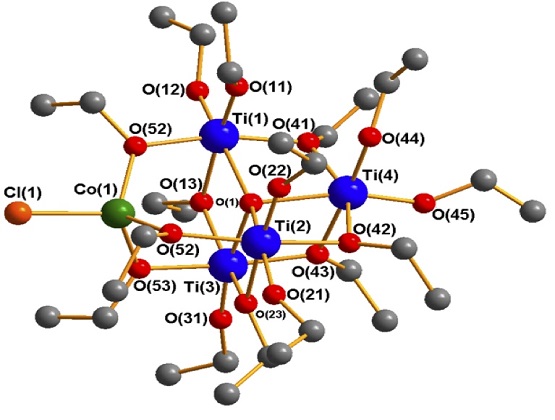
Materials Chemistry provides the theoretical basis for the design, development and understanding of new types of matter, whether it may be organic, inorganic or hybrid. Chemistry is developing a range of new materials from nanomaterials and molecular devices to polymers and expanded solids, such as molecular filters, catalysts, sensors, molecular transporters, artificial scaffolds as well as light-emitting with the potential for large scientific and general effects.
Types of materials chemistry:
• Interface of Chemistry-Biology
• Catalysis
• Green chemistry
• Crystal structure of materials
• Crystal growth techniques
• Analytical chemistry
• Organic and inorganic Substances
• Organic/ Inorganic / Theoretical Chemistry
• Micro and macro molecules
• Atomic structure and interatomic bonding
Related Tags:
Materials Chemistry| Materials Chemistry Conferences 2023| International conference on materials chemistry Paris, France| International Conference on Materials Science and Materials chemistry| Materials Science and Engineering Conferences 2023| Nanomaterials and Nanotechnology 2023| Functional Materials 2023| Smart Hybrid Materials 2023|3D Printing and Additive Manufacturing Conferences 2023| Polymer Technology and Plastics 2023|
Associations and Societies:
SOCIETY FOR MATERIALS CHEMISTRY| American Chemical Society (ACS) | ASM International the Materials information on Societies| The Minerals, Metals, & Materials Society (TMS) | Association of Composites Manufacturers | Society for the Advancement of Material and Process Engineering (SAMPE)| The American Ceramic Society | Association of American Ceramic Component Manufacturers | United States Advanced Ceramics Association |

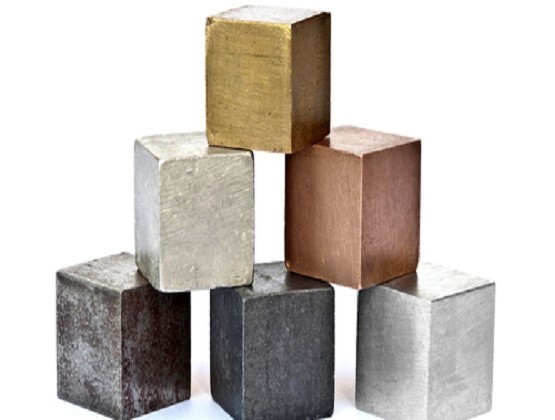
Metals contain precious metals like gold, platinum, and silver, as well as industrial metals which contains steel, copper, and aluminum. Mineral mining includes the extraction of minerals, which also has coal and valuable gemstones, such as diamonds.
Related Tags:
Metals 2023 | Mining Materials Paris, France 2023 | International Conference for Metals and Mining Materials 2023| International Conference on Minerals, Metallurgy and Metals | Materials Conference 2023| Graphene Technology Congress 2023| Nature and Properties of Materials 2023| Metamaterials Congress 2023|Polymers and Biopolymers 2023| Functional Materials 2023|
Associations and Societies:
Abrasive Manufacturers Association of India | Alloy Steel Producers Association of India (ASPA)| Alloys Manufacturers Association | Aluminum Association of India (AAI) |Aluminum Caster's Association of India (ALUCAST) | The Minerals, Metals & Materials Society | Association for Iron & Steel Technology | The Materials Research Society | Society for Mining, Metallurgy, and Exploration | Minerals Metals and Materials Society (TMS)|

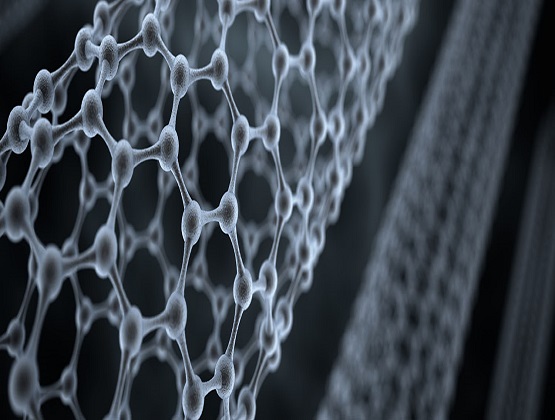
Mostly, functional materials are considered as materials which own specific native properties and functions. These materials are originated in all classes of materials such as metals, polymers, ceramics, and organic molecules. Functional materials are used usually in electromagnetic applications from kHz to THz. They are also frequently used at optical frequencies where the plasmonic properties of metals assume particular importance. There exists an extreme importance for functional materials in case of materials for energy such as electro- and magneto caloric materials, and also for energy storage and for solar harvesting functions. Some of the examples are Ferro electricity, piezoelectricity, magnetism, and energy storage function.
Related Tags:
Functional Materials 2023 | Ceramic Materials 2023 | Meta materials 2023 | International Conference on Functional Materials | International Conference on Advanced Functional Materials |Carbon Nanotubes Conferences 2023| Metallurgy 2023| Semiconductors Conference 2023| Biomaterials and Medical Devices Conferences 2023| Advanced Energy Materials 2023|
Associations and Societies:
Advanced Functional Materials Congress | International Association of Advanced Materials – IAAM | |European Materials Research Society | Society for the Advancement of Material and Process Engineering (SAMPE) | American Society for Testing and Materials (ASTM)| NACE International, The Corrosion Society| Materials Science and Engineering Association | Materials Research Society (MRS)| American Chemical Society (ACS) |

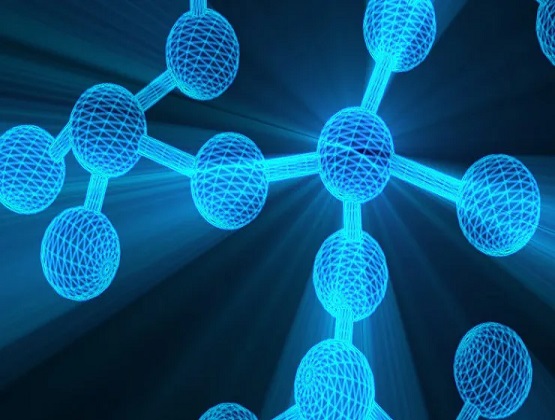
Smart hybrid materials are composites that contain two constituents at the nanometer or molecular level. Generally, one of these compounds is inorganic and the other one organic in nature. These are designed materials that can be changed into a controlled fashion by external stimuli, such as stress, moisture, electric or magnetic fields, light, temperature, pH, or chemical compounds.
Types of Smart Materials:
Related Tags:
Smart Hybrid Materials 2023| International Conference on Smart Materials 2023| Smart Materials Conferences 2023 | Materials Science and Engineering Conferences 2023| Materials Science and Smart Materials 2023| Smart Materials Congress 2023| Smart Hybrid Materials Paris, France 2023| Functional Materials 2023| Materials Chemistry 2023| Structural Materials 2023| Advanced Energy Materials 2023|
Associations and Societies:
Society for the Advancement of Material and Process Engineering | Materials Science and Engineering Association | Materials Research Society (MRS)|American Society for Engineering Education (ASEE) | ASTM International | National Society for Professional Engineers (NSPE) | International Association of Nanotechnology (IANT)|Australasian Bio plastics Association | BBIA – Bio-Based and Biodegradable Industries Associations | Bio – Biotechnology Industry Organization (USA)|


Magnetism and Ferro electricity are required to many forms of present technology, and the hunt for multiferroic materials. These two phenomena are very well coupled, and have great technological and fundamental importance. Ferro electricity and magnetism incline to be mutually exclusive. They interact weakly with each other when they coexist. The stimulating new development is the discovery that even a weak magneto electric interaction can lead to spectacular cross-coupling effects. It happens when it induces electric polarization in a magnetically ordered state. Such magnetic Ferro electricity, showing an unparalleled sensitivity to applied magnetic fields that occur in 'frustrated magnets' with competing interactions between spins and complex magnetic orders.
Related Tags:
Magnetism and Multiferroism Congress 2023| International Conference on Multiferroic Materials and Ferromagnetism 2023| International Conference on Transition Metal Magnetism and Magnetochemistry| Materials Science and Engineering Conferences 2023|
Nanomaterials and Nanotechnology 2023| Functional Materials Conferences 2023| Smart Hybrid Materials 2023| 3D Printing and Additive Manufacturing Conferences 2023| Polymer Technology and Plastics 2023| Graphene Technology Conference 2023|
Associations and Societies:
EMA - The European Magnetism Association| AMT-The Association for Manufacturing Technology | International Association of Advanced Materials – IAAM | European Materials Research Society | Society for the Advancement of Material and Process Engineering | Materials Science and Engineering Association | Materials Research Society (MRS)| American Society for Engineering Education (ASEE) | ASTM International | National Society for Professional Engineers (NSPE) |


Semiconductors have specific electrical properties. It is an engineering wonder. A substance which conducts electricity is called a conductor, and does not conduct electricity is called an insulator. Semiconductors are substances with properties somewhere between conductor and insulator. ICs(integrated circuits) and electronic separate components such as diodes and transistors are made of semiconductors. Common essential semiconductors are silicon and germanium.
Related Tags:
Semiconductors | Semiconductors Conferences 2023 | Advanced Semiconductor Manufacturing Conference |Semiconductor Summits | Semiconductor Congress | Composite and Ceramic Materials Confernces 2023| Carbon Nanotubes 2023| Nature and Properties of Materials Summit 2023| Materials Chemistry 2023| Polymer Technology and Plastics Conference 2023|Graphene Technology 2023|
Associations and Societies:
Semiconductor Industry Association | European Semiconductor Industry Association (ESIA)| European Materials Research Society | Society for the Advancement of Material and Process Engineering (SAMPE) | American Society for Testing and Materials (ASTM)| NACE International, The Corrosion Society| American Society for Engineering Education (ASEE) | National Society for Professional Engineers (NSPE) | International Association of Nanotechnology (IANT) | Microscopy Society of America (MSA)| Materials Science and Engineering Association | Materials Research Society (MRS)|

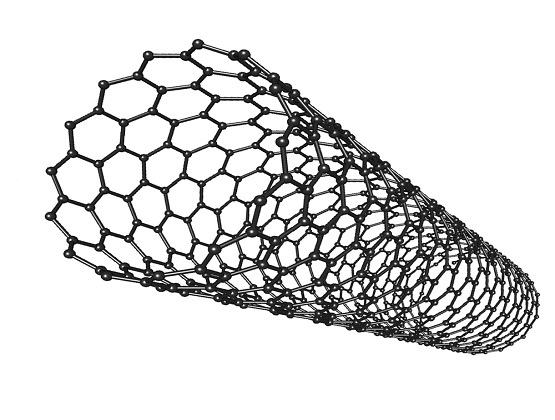
A carbon nanotube is a carbon allotrope that looks like a tube of carbon atoms. Carbon nanotubes are very strong and hard to break, but they are still light. Due to their extraordinary mechanical, electrical, and thermal properties, carbon nanotubes are one of the most explored nanomaterials. Single wall carbon nanotubes have only one cylinder of carbon atoms, whereas multiwall carbon nanotubes feature several concentric cylindrical lattices of carbon atoms. Carbon nanotubes are also known as Bucky tube .
Related Tags:
Carbon Nano materials 2023 | World Congress on Carbon and Advanced Energy Materials| International Conference on Carbon Nanotube 2023 | International Conference on Carbon Nanotubes and Chemistry| Carbon Nanotube Conferences Paris,France 2023| International Conference on Carbon Nanotubes and Graphene | International Conference on Carbon Nanotubes and Materials Chemistry| 3D Printing and Additive Manufacturing Conferences 2023| Polymer Technology and Plastics 2023| Graphene Technology Congress 2023| Nature and Properties of Materials 2023|
Associations and Societies:
Indian Carbon Society | European Materials Research Society | Society for the Advancement of Material and Process Engineering (SAMPE) | American Society for Testing and Materials (ASTM)| NACE International, The Corrosion Society| Materials Science and Engineering Association | Materials Research Society (MRS)| Materials Science and Engineering Association | Indian National Construction & Materials Associations | ACMA - American Composites Manufacturers Association |

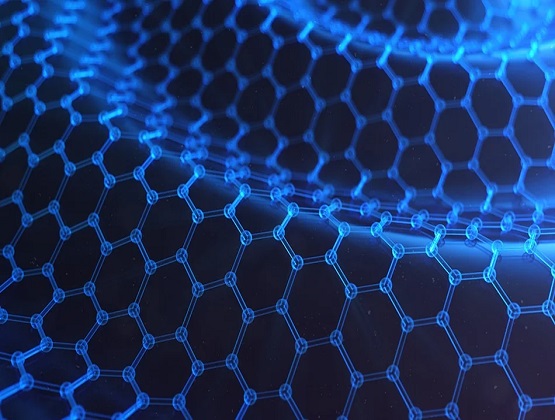
Graphene is a disruptive technology. It is most optimistic material in one of the nanomaterials due to its ideal combination of exceptional properties. It is one of the strongest materials and thinnest material. Compared to all other materials, Graphene generates better heat. It is a good conductor of electricity. It is optically transparent. Even though it is thick, it is resistant to gases – not only Helium, the smallest gas atoms can pass through it.
Related Tags:
Graphene 2023 | Graphene Conferences Paris, France 2023 | Congress on Carbon and Advanced Energy Materials| European Congress on Graphene and 2D Materials| Graphene Summit 2023|Carbon Nanotubes 2023|Materials Science and Engineering Conferences 2023| Nanomaterials and Nanotechnology 2023|Semiconductors Conference 2023|Advanced Energy Materials 2023| Metamaterials Congress 2023|
Associations and Societies:
National Graphene Association| AUSTRALIAN GRAPHENE INDUSTRY ASSOCIATION (AGIA)| THE GRAPHENE COUNCIL| FACILITY MANAGEMENT ASSOCIATION OF AUSTRALIA|THE ENERGY EFFICIENCY COUNCIL AND THE STANFORD UNIVERSITY THERMAL & FLUID SCIENBBIA – Bio-Based and Biodegradable Industries Associations | CES AFFILIATES PROGRAM (TFSA)| Australasian Bio plastics Association | Bio – Biotechnology Industry Organization (USA) | Society for the Advancement of Material and Process Engineering | Materials Science and Engineering Association | Materials Research Society (MRS)|


Nature and Properties of materials also involves the study of fundamentals of polymers, composites, metals and metallic alloys, and smart materials. These are categorized as natural or processed materials.. These materials occur in natural environment with modification. The materials that do not occur in the natural environment are processed materials These processed materials cab be modified and manufactured to fulfil a certain purpose. It is related to the field of Civil, Mechanical, Aerospace and other structural applications.
Types of Materials:
Related Tags:
Nature and Properties of Materials| Metals and Mining Materials Conferences 2023| Polymer technology and Plastics 2023| Ceramics Summit 2023| Composite, Coating and Ceramic Materials 2023| Carbon Nanotubes 2023| Materials Chemistry 2023| Nature and Properties of Materials Conferences 2023| Materials Science and Engineering Conferences 2023| Advanced Energy Materials 2023| Metamaterials 2023|
Associations and Societies:
American Chemical Society (ACS) | ASM International the Materials information on Societies| The Minerals, Metals, & Materials Society (TMS) | European Materials Research of Society |Australasian Bio plastics Association | BBIA – Bio-Based and Biodegradable Industries Associations | Bio – Biotechnology Industry Organization (USA) | American Society for Engineering Education (ASEE) | ASTM International | National Society for Professional Engineers (NSPE) | International Association of Nanotechnology (IANT)|

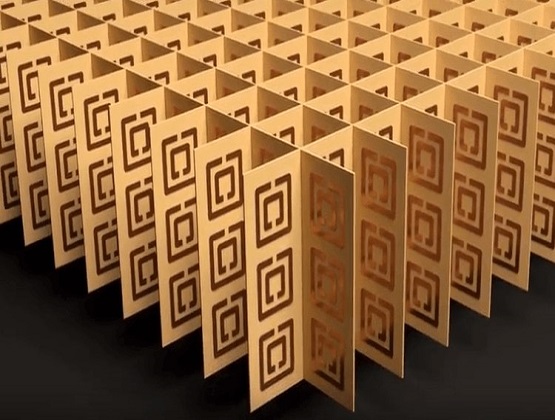
Metamaterials are composite media with characteristic electromagnetic properties which can be engineered. These are made up of sub wavelength building blocks mostly with metals. These materials permit great control over optical fields, permitting effects such as negative refraction that has to be realized. The properties of these materials materials are resulting from their recently designed structures, but not from the properties of the base materials.
Related Tags:
Metamaterials| International Conference on Metamaterials 2023 | International Congress on Artificial Materials| International Conference on Metamaterials and Nanophotonics| International Conference on Metamaterials Paris, France| Materials Science and Engineering Conferences 2023| Nanomaterials and Nanotechnology 2023| Functional Materials Conferences 2023| Smart Hybrid Materials 2023 | 3D Printing and Additive Manufacturing Conferences 2023| Polymer Technology and Plastics 2023|
Associations and Societies:
Association of Old Crows| Society for the Advancement of Material and Process Engineering (SAMPE) | American Society for Testing and Materials (ASTM)| European Materials Research Society| American Society for Engineering Education (ASEE) | National Society for Professional Engineers (NSPE) | International Association of Nanotechnology (IANT) | Microscopy Society of America (MSA)| Materials Science and Engineering Association | Materials Research Society (MRS)| Association of Composites Manufacturers |


The other topics of Materials Sceince and Engineering includes are: